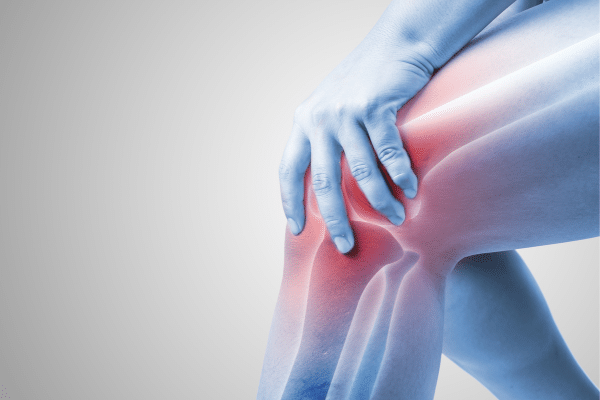Leg day often receives mixed reviews in the fitness community, with many enthusiasts either eagerly embracing it or conveniently skipping it. This blog post aims to shed light on the undeniable benefits of incorporating leg workouts into a regular exercise regimen. From enhancing overall physical health to improving athletic performance, the reasons for not neglecting leg day are compelling and backed by science. It’s high time to debunk the myths and discover the multifaceted advantages of giving those lower limbs the attention they rightfully deserve.
Contents
Increases Bone Density

Strength training, especially when it targets the legs, plays a pivotal role in enhancing bone density. The stress placed on bones during exercises like squats, deadlifts, and lunges stimulates the activity of osteoblasts, the cells responsible for bone formation. This adaptive response not only fortifies the bones but also reduces the risk of fractures and osteoporosis, particularly beneficial as one ages. Engaging in regular leg workouts ensures that the skeletal framework receives the necessary stimulus to remain strong and resilient, providing a sturdy foundation that supports overall well-being.
Scientific studies consistently underscore the correlation between weight-bearing leg exercises and improved bone health. For instance, research indicates that individuals who engage in regular strength training have denser bones than those who don’t. This is especially crucial for postmenopausal women, who are at a higher risk for osteoporosis. Incorporating leg exercises into workout routines is not just about building muscle; it’s an investment in maintaining a robust and healthy skeletal structure, paving the way for an active and independent lifestyle well into the later years.
Enhances Weight Loss

The leg muscles, comprising major groups like the quadriceps, hamstrings, and calves, represent some of the largest muscles in the body. When engaged in exercises, these muscles consume considerable energy, making leg workouts exceptionally effective for burning calories. This high energy expenditure doesn’t just stop at the end of a workout session; it continues for hours, boosting the overall metabolic rate. As a result, incorporating leg exercises into a fitness routine can accelerate the weight loss process, leading to more efficient and sustainable results.
Moreover, leg workouts contribute to muscle hypertrophy, the growth of muscle fibers in size and strength. As muscle tissue requires more energy to maintain than fat tissue, an increase in muscle mass elevates the resting metabolic rate. This means that even outside of workout sessions, the body continues to burn calories at an elevated rate. This phenomenon, often referred to as the “afterburn effect,” is particularly pronounced after intense leg workouts, making them a powerful tool for anyone aiming to lose weight and improve their body composition.
Reduces Risk Of Injury

Strengthening leg muscles is a proactive approach to reducing the risk of injuries, not only during workouts but in daily life as well. Robust leg muscles provide better support for the entire body, ensuring proper alignment and reducing undue stress on joints. Exercises like lunges and squats are not just about building muscle; they also improve the stability of the knees, hips, and ankles. This fortification is crucial for anyone looking to engage in physical activities safely, minimizing the risk of sprains, strains, and other common injuries.
Moreover, a balanced leg workout regime promotes symmetry in muscle development, preventing muscular imbalances that can lead to chronic issues. For example, strengthening the hamstrings in proportion to the quadriceps can prevent knee pain and injury by ensuring balanced support for the joint. Regular leg exercises ensure that all supporting muscles are equally engaged, promoting a harmonious and resilient muscular structure, ready to withstand the rigors of daily activities and rigorous exercise routines.
Improves Balance And Coordination

The benefits of leg workouts extend beyond strength and aesthetics, significantly enhancing balance and coordination. These two elements are crucial for performing everyday tasks with ease and preventing falls, particularly in older adults. Exercises that challenge the lower body, such as single-leg deadlifts or balance-based movements, train the body to stabilize itself, engaging multiple muscle groups in unison. This not only improves proprioception but also ensures that the body can respond effectively to maintain equilibrium in various situations.
Incorporating balance-focused exercises into leg day routines is not just about preventing falls; it’s about enhancing overall mobility and the quality of life. Improved balance and coordination mean smoother, more confident movements, whether in a gym setting, playing sports, or simply navigating through daily activities. This holistic approach to fitness ensures that the body is not just strong but also adept and agile, ready to face the dynamic challenges of everyday life.
Enhances Cardiovascular Health

Engaging the lower body in vigorous exercises has profound effects on cardiovascular health. Leg workouts, especially those that are high-intensity or involve large muscle groups, increase heart rate and promote blood circulation. This not only strengthens the heart muscle but also improves the elasticity of blood vessels, reducing the risk of heart-related conditions. Moreover, regular leg exercises help regulate blood pressure and cholesterol levels, further contributing to a healthy cardiovascular system.
The beauty of leg workouts lies in their versatility and the ability to cater to different fitness levels while still offering cardiovascular benefits. Whether it’s through high-intensity interval training (HIIT) with leg-focused exercises or a steady-state cycling session, these workouts push the cardiovascular system to adapt and improve. Over time, this leads to enhanced endurance, a lower resting heart rate, and an overall healthier heart, underscoring the importance of not overlooking leg day in a comprehensive fitness routine.
Reduces Lower Back Pain

Lower back pain, a common ailment affecting a significant portion of the population, can often be alleviated through targeted leg workouts. Strong and well-conditioned leg and core muscles provide essential support for the lower back, ensuring proper posture and alignment. Exercises that focus on the glutes, hamstrings, and quadriceps can take the strain off the lower back by distributing weight and tension more evenly throughout the body. This is particularly beneficial for individuals who spend long hours sitting or have sedentary lifestyles.
Additionally, leg exercises that emphasize full-body movement, such as deadlifts or squats, encourage the engagement of the core muscles, further supporting the lower back. Strengthening these muscles not only reduces existing back pain but also helps in preventing future discomfort. By integrating leg workouts into a regular exercise regime, individuals can create a solid foundation, alleviating undue stress on the lower back and promoting a pain-free and active lifestyle.
Boosts Athletic Performance

For athletes and fitness enthusiasts alike, leg strength is a cornerstone of athletic performance. Strong legs provide the foundation for speed, agility, and power, essential components in virtually every sport. From explosive movements like jumping and sprinting to endurance-based activities such as running or cycling, well-conditioned leg muscles contribute to superior performance and a competitive edge. Leg workouts that focus on both strength and flexibility ensure that athletes can move with precision and force, capitalizing on their full potential.
In addition to raw strength, leg workouts promote muscular endurance, allowing athletes to maintain high performance levels for extended periods. This is particularly crucial in sports where sustained effort is required, highlighting the importance of a comprehensive leg training regimen. By consistently challenging and developing the leg muscles, athletes can ensure that their lower body is not just a strong foundation but also a potent source of athletic prowess.
The Bottom Line
In conclusion, the benefits of maintaining a consistent leg workout routine are undeniable and far-reaching. From enhancing bone density and aiding in weight loss to improving balance, coordination, and cardiovascular health, leg day should never be an afterthought. Furthermore, focusing on lower body strength plays a pivotal role in reducing the risk of injury, alleviating lower back pain, and boosting overall athletic performance. Embracing leg workouts is not merely about achieving a balanced physique; it’s about investing in a healthier, more capable, and resilient body. So, next time the temptation to skip leg day arises, remember the multitude of benefits that await on the other side of those squats, lunges, and deadlifts.


